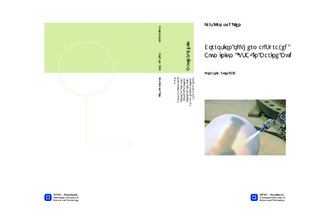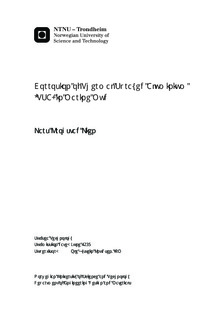| dc.description.abstract | A solution for cooling down reservoir fluid in an oil and gas pipeline has been suggested. By removal of the thermal isolation coating on the first kilometer of the pipeline and replacing it with thermal sprayed aluminum (TSA) will the increased thermal conductivity of the pipe speed up the cooling rate of the fluid. A challenge with this solution is heating of TSA at the outside of the pipe. At higher temperatures is it expected an elevated corrosion rate of aluminum compered to normal service temperatures. In addition to the high temperature is there another concern. The pipe will be protected with sacrificial anodes to prevent rapid corrosion of the TSA. As a result of the cathodic protection will a cathodic reaction occur on the TSA surface, and hydroxide will be produced. What will happen when the pipe sinks into the sea bottom end gets covered by mud is unknown. A suggested theory is that the mud will hinder diffusion of the hydroxide produced from the cathodic reaction on the TSA surface. If so, will this lead to a pH increase near the TSA surface. In case of a the pH increase to about 9 the aluminum will change from being passive to active, this results in rapid corrosion of the TSA coating. The combination of the high temperature and the possible high pH can lead to a very short lifetime for the TSA coating, as the aluminum will corrode very rapidly.To investigate the corrosion rate of TSA at the conditions mentioned over, has an experiments been conducted. Five samples TSA coated steel, coated in accordance with ISO 209 Grade 1100, with thickness of about 250µm were tested. A sealer was applied to all the samples. No coating failure was fabricated at any of the samples.The test set up involved exposure at 95 °C, blanketing of the TSA with mud, and polarization to different potentials. The test duration was five weeks. During the test period hourly logging of current, potential, temperature and pH at the surface of the TSA were done by using KorrosjonsLogger©. For measuring the corrosion rate linear polarization resistance (LPR) measurements were conducted weekly. Together with Tafel curves recordings at test termination. To measure the pH at the TSA surface was a sensor fabricated. A conventional glass electrode could not be used because of the harsh conditions. Trough a literature study was it decided to fabricate iridium oxide electrodes to use for the pH measurements. An iridium wire and lithium carbonate were obtained, and seven iridium oxide electrodes were made by the carbonate melt method. Prior to the utilization in the corrosion test was the stability and pH response of the iridium oxide electrodes measured. After the test period did neither of the samples, which were cathodic polarized, show any visible degradation of the TSA coating. The sample that was anodic polarized suffered from a leakage, because of corrosion of the TSA after 14 days, and was then removed from the experiment. For the samples that completed the test the cathodic current was between 23 mA/m2 and 38 mA/m2 and the corrosion rate between 10 µm/year and 15 µm/year after five weeks exposure. | nb_NO |

